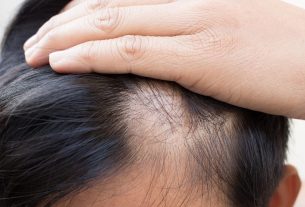Respiratory syncytial virus (RSV) is a virus that causes respiratory infection leading to symptoms such as a runny or stuffy nose, cough, fever or difficulty breathing.
This infection can affect people at any age, but it is more serious in babies under 6 months of age, children and the elderly, as their immune systems are more weakened, which can result in bronchiolitis, pneumonia or respiratory failure, for example.
It is essential to consult a pediatrician, general practitioner or infectious disease specialist as soon as the first symptoms appear to begin the most appropriate treatment, which may involve hydration or the use of medication to alleviate symptoms, and in more serious cases, hospitalization.

Respiratory syncytial virus symptoms
The main symptoms of respiratory syncytial virus infection are:
- Runny or stuffy nose;
- Coughing and sneezing;
- Sore throat, headache or body pain;
- Fever;
- Faster breathing or wheezing;
- Loss of appetite.
The symptoms of RSV do not appear all at once and can be noticed in the baby through symptoms such as irritability, difficulty breastfeeding, drowsiness or difficulty breathing.
When the first symptoms of respiratory syncytial virus appear, the child should be taken to the pediatrician or emergency room to begin the most appropriate treatment to avoid complications.
Consult your nearest pediatrician to have your symptoms assessed and the diagnosis confirmed:
Taking care of your health has never been easier!
Is respiratory syncytial virus dangerous?
RSV infection is most dangerous for children under 2 years of age or those who have chronic lung disease or congenital heart disease, as the virus can affect the lungs and cause bronchiolitis or pneumonia. Find out more about what bronchiolitis is and how to treat it.
In these cases, symptoms may appear, such as purple fingers and lips, more prominent ribs when the child inhales, prolonged exhalation, apnea, drowsiness or respiratory failure.
Furthermore, respiratory syncytial virus infection is also more dangerous in the elderly, as they have a weakened immune system.
How to confirm the diagnosis
The diagnosis of respiratory syncytial virus infection is clinical and is made by a pediatrician, general practitioner or infectious disease specialist through evaluation of symptoms and physical examination.
In some cases, the doctor may request a chest X-ray to evaluate the lungs and the presence of bronchiolitis or pneumonia, or even a PCR test to identify the presence of the virus in the body.
How transmission happens
The main forms of transmission of respiratory syncytial virus are:
- Direct contact with infected people, through inhalation of droplets of saliva or nasal secretions released when the infected person coughs, sneezes or talks;
- Contact with surfaces or objects contaminated with the virussuch as cups, cutlery or toys, as the virus can remain on surfaces for up to 24 hours;
After a person comes into contact with the virus, the incubation period is 4 to 5 days, that is, symptoms will be felt after these days have passed.
Furthermore, syncytial virus infection has a seasonal characteristic, that is, it occurs more frequently in winter, as during this period people tend to spend more time indoors, and in early spring, due to drier weather and low humidity. .
How the treatment is carried out
The treatment of respiratory syncytial virus infection must be carried out under the guidance of a pediatrician, general practitioner or infectious disease specialist, to alleviate symptoms and avoid complications from the infection.
The main treatments that may be recommended by your doctor are:
1. Nasal wash with serum
Nasal washing with 0.9% saline helps eliminate excess nasal secretions, as it makes the phlegm more liquid, making it easier to eliminate. Learn how to wash your nose.
Thus, this treatment helps to alleviate the symptoms of a blocked or runny nose caused by the respiratory syncytial virus.
Read too: Baby with a blocked nose: what to do and main causes
2. Offer breast milk
Breastfeeding the baby, offering breast milk or formula, helps keep the baby hydrated, in addition to providing antibodies that protect the baby and strengthen his immune system, which helps fight the respiratory syncytial virus. See all the benefits of breastfeeding for your baby.
For babies over 6 months old who have already started to introduce food, you can offer water, soup, warm broths, yogurt or well-diluted teas, without sugar and at room temperature, such as chamomile tea, for example.
3. Drink more water
In the case of adults or the elderly, water consumption should be increased, and it is recommended to drink around 2 liters of water per day, in its natural or flavored form, for example.
If the baby, child, adult or elderly person is unable to increase their fluid intake and is dehydrated, it may be necessary to be admitted to the hospital to receive serum and electrolytes via a vein.
4. Medicines
The remedies for respiratory syncytial virus that may be recommended by your doctor are:
- Anti-inflammatories or analgesicssuch as paracetamol or ibuprofen, to reduce fever and relieve headache, throat or body pain;
- Bronchodilatorsto open the bronchi and facilitate breathing;
- Antibioticsto combat bacterial infections such as bacterial pneumonia.
Furthermore, another medicine that may be recommended by the doctor for babies or children with a serious infection is ribavirin, an antiviral, which inhibits the multiplication of the respiratory syncytial virus.
In some cases, hospitalization may be necessary to receive medication via vein.
5. Respiratory physiotherapy
Respiratory physiotherapy may also be indicated to help eliminate secretions from the lungs and facilitate breathing. Find out more about what respiratory physiotherapy is for.
6. Oxygen therapy
Oxygen therapy may be indicated in cases of respiratory failure, and is performed in the hospital using a high-flow nasal cannula, CPAP, intubation or mechanical ventilation. Find out how oxygen therapy is performed.
How to prevent
Preventing respiratory syncytial virus infection can be done with hygiene measures, such as:
- Wash your hands frequently, with water and neutral soap;
- Apply alcohol gel to your hands frequently;
- Clean baby’s toys frequently and avoid sharing them with other children;
- Avoid touching surfaces and touching your eyes, mouth or nose;
- Avoid contact with people who have respiratory syncytial virus infection, flu or colds;
- Avoid staying in closed environments or with many people and little air circulation for a long time.
In cases of premature babies, those with chronic lung disease or congenital heart disease, the pediatrician may recommend the application of a medicine called palivizumab, which is a monoclonal antibody that helps stimulate the baby’s defense cells.
See tips on how to wash your hands correctly:
Respiratory syncytial virus vaccine
The respiratory syncytial virus vaccine is indicated to prevent bronchiolitis or other serious lower respiratory tract infections in newborns and babies up to 6 months of age.
This vaccine, called Abrysvo, is recommended to be administered in a single dose to pregnant women between weeks 24 and 36 of pregnancy, allowing the production of antibodies against the RSV-A and RSV-B subtypes.
These antibodies are passed to the baby through the placenta, helping to prevent infection or serious illness. The respiratory syncytial virus vaccine should not be administered to babies, but only to pregnant women.
Additionally, the Abrysvo vaccine or the Arexvy vaccine are also indicated for seniors over 60 to help prevent serious complications from the infection.

Sign up for our newsletter and stay up to date with exclusive news
that can transform your routine!
Warning: Undefined array key "title" in /home/storelat/public_html/wp-content/plugins/link-whisper-premium/templates/frontend/related-posts.php on line 12
Warning: Undefined array key "title_tag" in /home/storelat/public_html/wp-content/plugins/link-whisper-premium/templates/frontend/related-posts.php on line 13



